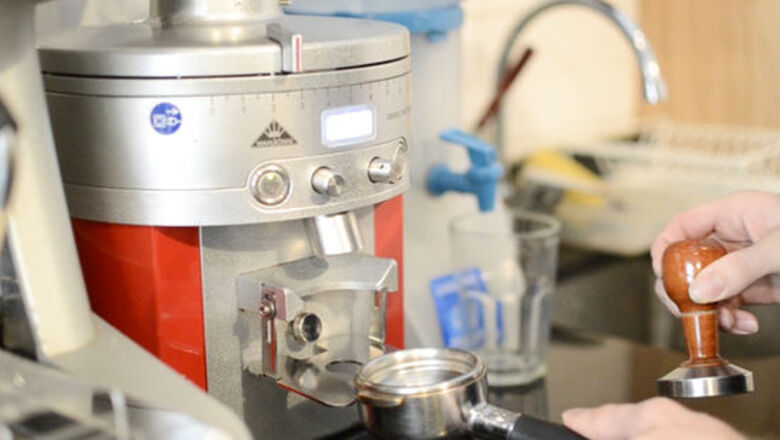
views
Making a Latte with an Espresso Machine
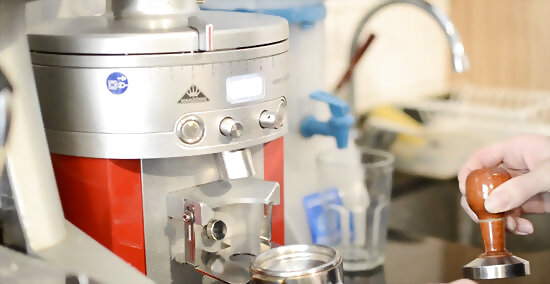
Grind the coffee. Espresso uses a very finely ground coffee. The coffee grounds should be about the size of the grains of table salt. The coffee grounds will clump and stick together when they are the correct size. Once you become more experienced with making espresso drinks, you can experiment with the grind of your coffee to get the exact flavor you like. Grind the espresso beans in a burr grinder for added freshness and control. Burr grinders will let you control how fine or coarse your espresso grounds turn out, and will result in a more consistent grind.
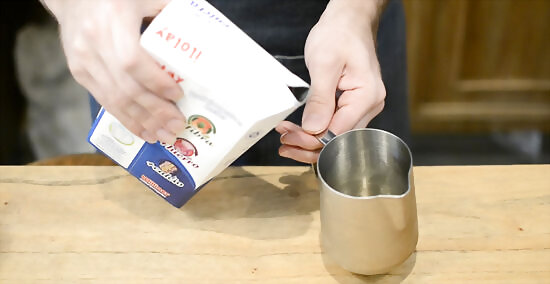
Prepare the milk. For a single, small latte you will need about 6 ounces of milk. A good rule to follow is that you will need 6 ounces of milk per ounce of brewed espresso. Nonfat milk is the easiest to make foam but doesn't taste as decadent as milk with more fat. Two percent milk produces foam nicely, while adding a little bit of creaminess to your drink. Whole milk is the hardest milk to foam, but makes a more flavorful latte due to its higher fat content.
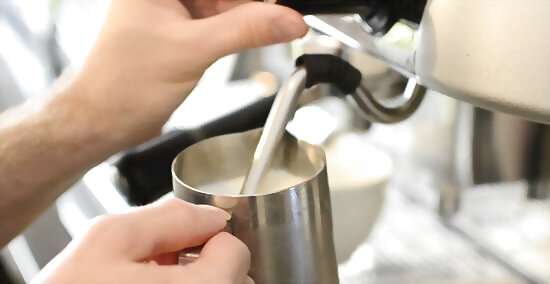
Steam the milk. Pour your desired amount of milk into a metal pitcher. Insert the steam wand diagonally into the milk, resting it just below the surface. This will create the froth necessary for a good latte by allowing air to get into the mix along with the steam. Grasp the handle of the pitcher with a towel to prevent your hand from getting scorched as the pitcher heats up. Open up the steam hatch by turning the appropriate knob on your espresso machine. This is often a dial you need to twist. Using a thermometer, steam milk until it reaches a temperature between 150ºF and 155ºF. Be careful not to steam the milk above 170ºF or it will scorch. Aim for small, light bubbles (called microfoam) instead of big, soapy bubbles. The foam should have lightness without sacrificing the body.
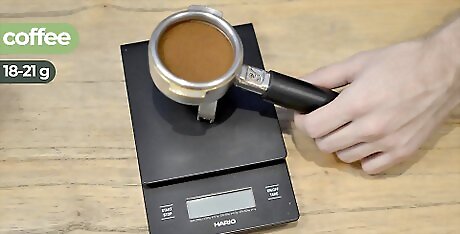
Measure the coffee for your latte. Each espresso shot will need to have a specific amount of coffee. Most lattes are made using a double shot of espresso, which means two shots. For each shot of espresso measure out 18-21 grams of ground coffee. You can do this by putting the espresso machine's portafilter on a kitchen scale. Zero the machine with the empty portafilter on it. Carefully add 18-21 grams of coffee per espresso shot.
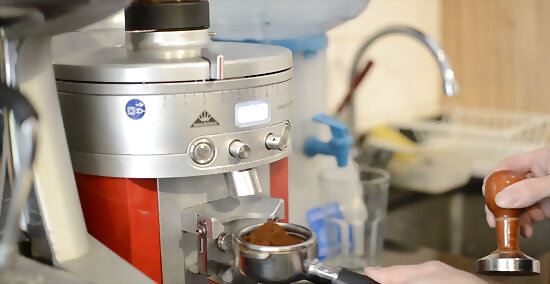
Tamp the coffee. This is when you compress the ground espresso into the machine's portafilter using an espresso tamper. This looks like a small weight with a little handle on top. To tamp the coffee, grasp the tamp handle with your fingers. Position your hand, elbow, and forearm directly above the portafilter and push down. Tamp down using an even twisting motion. Apply between 30 lbs of pressure for an ideal tamp. Press down on a bathroom or kitchen scale to get a sense of how hard you'll have to press on the portafilter. Tamping will create a "puck" of coffee. This must be evenly compressed so the espresso will brew evenly.
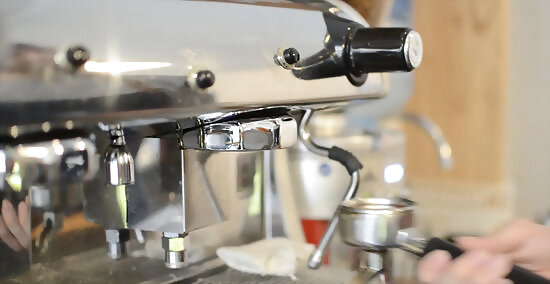
Make the espresso shots. Lock the portafilter into the group head on the espresso machine. Press the brewing button on the machine to start making the shots. A perfect shot has a dark to medium brown with a minimum body and a small amount of cream (crema) or foam on its surface. A shot is brewed in about 30 seconds, but this will depend on both your grind and your machine. Taking too long to brew the espresso may result in bitterness, whereas not taking enough time will result in losing some of the flavor.
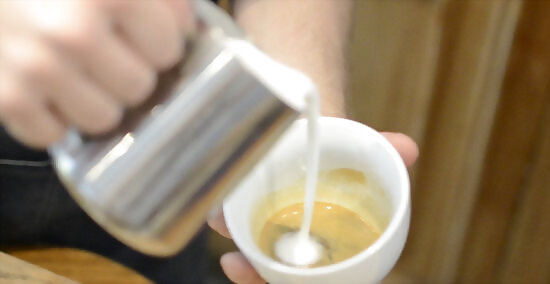
Pour the steamed milk over the espresso. The froth will pour smoothly and blend with the espresso cream. When pouring, use a spoon to regulate the flow of the foam. Make sure no foam enters the drink until you are about 1/4 in. from the top, where you can remove your spoon. The result should be a nice creamy brown drink base with a thin frothy top. Now is the time to make latte art if you're adventurous. This is entirely optional.
Making a Latte Without an Espresso Machine
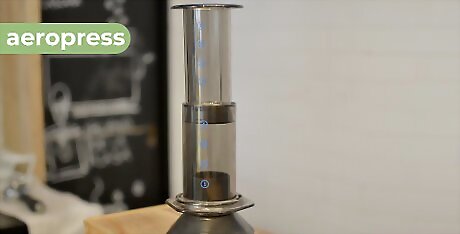
Consider using an Aeropress. This is a pour-over type of coffee making device that makes strong coffee. Boil some water. You will need 1 to 2 cups. Let it sit for 1 minute to cool slightly. Ideally, the water should be between 175 and 195 degrees rather than at boiling temperature. Measure out two Aeropress scoops of coffee. Grind the coffee with an electric grinder. For an espresso based drink like a latte, make the grinds very fine (as fine as table salt). The grinds will stick together and clump when they are finely ground. This is what you should watch for when grinding. Assemble the filter in the Aeropress cap. Wet the filter in the Aeropress. This will prepare the filter and remove any paper taste from your coffee. Place the Aeropress on top of your cup. Make the coffee. You will need to add the coffee and water to the Aeropress. Add ground coffee to the cup using the funnel. Add hot water up to the fill line on the Aeropress. Use the paddle stirrer or a spoon to mix the coffee and water. Insert the plunger onto the Aeropress and press down until you hear a long hiss. Taste the coffee. If it is too strong you can add some hot water to dilute it.
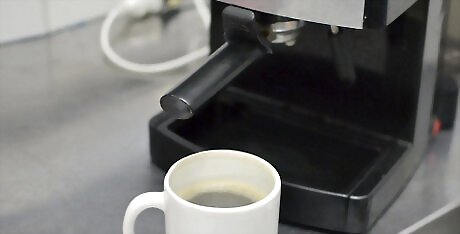
Make very strong coffee using a regular coffee maker. If you don't have a pour over device like an Aeropress, you can use a regular filter coffee maker. Use 1-2 scoops of coffee per cup of coffee made. You will want the coffee to be very strong to make a latte. Preferably, you can grind the coffee yourself to a finer grind. You will need 1-2 cups of coffee for a latte.
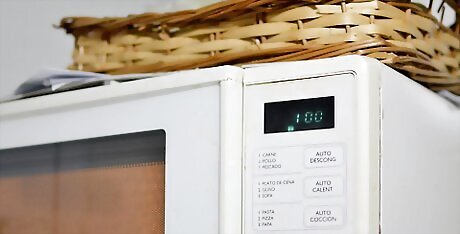
Froth some milk. It is a common misconception that you need a milk steamer to froth milk! You can do this using your microwave: Use non-fat milk, such as 2 percent, for best results. Pour some cold milk into a jar with a lid. Do not fill the jar more than halfway. Seal the lid tightly. Shake the milk in the jar vigorously for 30 to 60 seconds, until the volume has doubled. Take the lid off of the jar. Microwave the milk on high for 30 seconds. The foam will rise to the top.
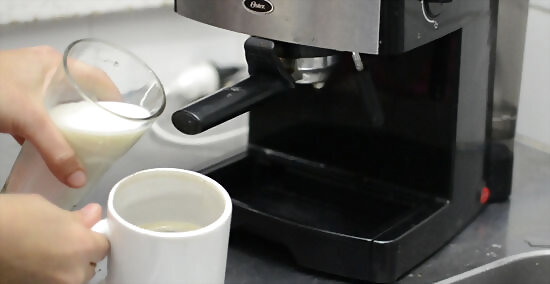
Pour 1 to 2 ounces of brewed strong coffee into your mug. Then add the milk to your coffee. Use a spoon to keep the foam back when pouring your milk in. Once you have enough milk into your latte, add a spoon of foam on top. Enjoy your homemade latte!
Making Other Types of Lattes

Prepare a vanilla latte. You will need espresso, milk, and vanilla flavored syrup for this.

Brew your espresso. You can do this using an espresso machine, Aeropress, or make strong coffee with a traditional filter machine. You will need 1.5 fluid ounces of espresso for this recipe. If you have an espresso machine, froth 1.5 cups of milk. 2% or whole milk is better for frothing. You will want the milk to be between 145 and 155 degrees. Otherwise, froth your milk in the microwave by putting it into a jar. Shake it for 30-60 seconds and then microwave for 30 seconds without a lid. Measure 2 tablespoons of vanilla flavored syrup into a mug. Add the espresso to the mug. Pour in the milk, holding back the froth with a spoon. Add a spoonful of foam on top of your latte.

Make a caramel latte. You will need strong brewed coffee, caramel flavored syrup, steamed milk, whipped cream, and caramel flavored sundae syrup to do this. Put 1/2 cup of milk into a microwave safe bowl. Microwave on high for 1 to 1.5 minutes. Whisk the hot milk until it is frothy. Pour 3-4 tablespoons of caramel flavored syrup into a coffee mug. Microwave on high for 30 seconds. Add 1/4 cup of hot coffee to the mug and stir well. Add the steamed milk to the mug. If you prefer, you can add a small amount of whipped cream and caramel syrup drizzle to the top.
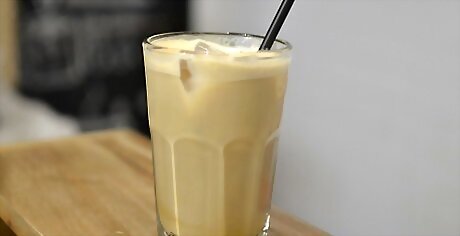
Prepare iced lattes. You can use espresso or brewed coffee for this recipe. You will also need milk and ice. Prepare 2 cups of espresso, if you prefer espresso based drinks. If you don't have an espresso maker or Aeropress, you should make a strong brewed coffee. To make a strong brewed coffee for this latte, make filter coffee from 1/3 cup of coffee grounds and 2 cups of cold water. Combine the hot coffee or espresso with 3 cups of milk. Stir well or shake to combine. Pour over ice in individual glasses. If you want, you can add a flavored syrup to the milk and coffee mixture to make a flavored drink.











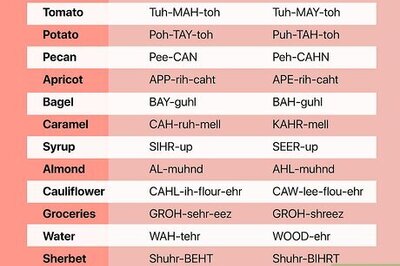



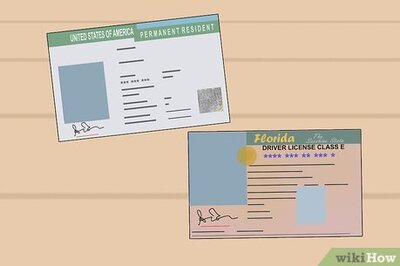


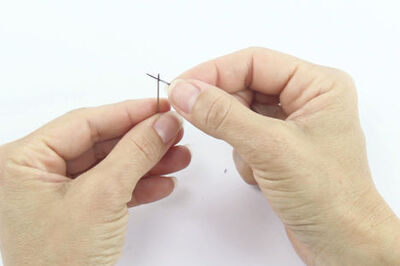
Comments
0 comment